Coaching At Work Awards 2018
Thursday, August 16th, 2018
Craig G. Howe from the Wisdom Tree Academy handed out the plaques and certificates to the winners.
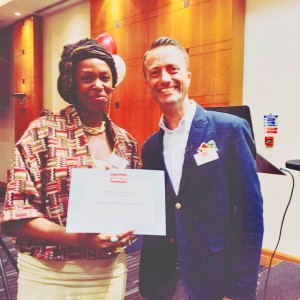

Thursday, August 16th, 2018
Craig G. Howe from the Wisdom Tree Academy handed out the plaques and certificates to the winners.

Saturday, August 20th, 2016
“City life cuts you off from the seasons, but walking restores your awareness.“ – Joan Bakewell
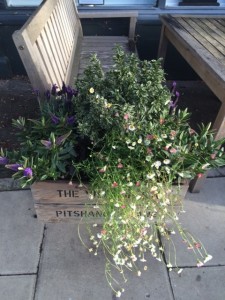
This weekend I am staying in Ealing on a city writing retreat hosted by the wonderful Clare Berry www.clarebarry.com It’s a perfect opportunity to unwind and spend chunks of time writing away from the distractions of life back at home.
I have fond memories of Ealing from childhood. In the sixties my Dad would drive my Mum, baby brother and me from South London in his bottle green Morris Minor car to the home of my godmother Aunty Eunice in Ealing.
At the time through my child’s eye their home was huge and even the pavements on the road they lived on were double the size of the slither of a road we lived on in Camberwell in London which may well have been one of the smallest streets in the whole of city. And to top off my idyllic memories the sun was always shining when we visited.
Now I am a half a century and more older the streets seem smaller in the Ealing suburb as do the houses but the energy of the place feels the same.
Sitting in the front reception room it is a while before I notice how quiet the area is compared to where I’ve lived for the last ten years. The moment reminds me that when we make time to get still the nature and vibration of a place speaks to us in many ways.
One way I get to know and really connect with the spirit of a place is by walking. Today as I head over the hill from the home I am staying in I am greeted with a wonderful view of the river Brent in the far distance. The river is a slim shimmering slit of silver from the naked eye but somehow its presence calms me knowing that water is nearby.

My host has drawn me a map. The wildness of a map hand drawn on paper rather than relying on Google maps heightens my sense of adventure. The night before I ask my host to point me in the direction of the nearby parks. Green spaces, what I call the lungs of a place always give me the heartbeat of the place and act as a natural compass to explore the area.
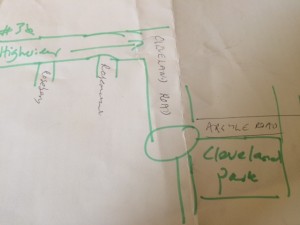
The roads I wander down are abundantly tree lined with assortments of red and orange geraniums in almost every other house or window box.
I walk for over ninety minutes and find myself winding down roads adorned with lovely cottages and front gardens showcasing huge plants like the cactus in the photograph below.
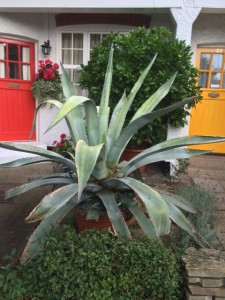
Walking accentuates the power of observation. It’s an ideal activity to sharpen and improve your writing skills because it allows you to really see in a way we don’t see and experience when travelling by car or transport.
Walking also contributes to the quality of your thinking. Both running and walking are incubators for the emergence of some of the best ever ideas and solutions for issues and dilemmas across my personal and professional life. What’s great is that it requires very little effort on my part.
The minutes flow by and I am lost on my meanderings. A good, long walk is always a great way for me to preparing to write. Well into my walk I catch sight of a notice board at the bottom of one of the long front gardens I am passing by. The kind you get in front of village churches.
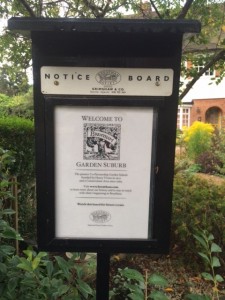
On reading I discover that I am in the heart of the Brentham conservation area. This is the reason why the gardens and plant life along these streets are so rich and vivid.

Here’s what it says on the website about the Brentham garden suburb:
Like a country village in the city, Brentham Garden Suburb is a little-known architectural gem in the midst of west London. The charming and distinctive estate of more than 600 homes and green spaces in north Ealing dates back to the early twentieth-century, when the Garden City movement was growing – as a reaction against the overcrowding and squalor of many homes in the city.
Brentham’s influence on domestic architecture and town planning is out of all proportion to its size. As you walk around, you find the tree-lined streets are curved and the houses arranged in irregular groups, creating a surprising view around every corner.Brentham also made history in another way. It was the first Garden Suburb built on ‘Co-partnership’ principles, so that residents could buy shares in their homes. www.brentham.com
My new discovery explains the reason behind the lawned alleyways I notice in-between many of the houses. My host informs me later that part of the original setting up of the co-operative included allocation of communal allotments and each house being gifted an apple tree.
I unexpectedly and almost immediately learn a lot about the area from a woman walking her dog who spots me taking a photo of the notice board and comes over to talk to me.
My walk without a mobile device except to take photos is energising. By the time I have arrived back at my host’s home I am lighter but also brimming over with words and I cannot wait to sit down and write this post.
I am curious. How well do you know the neighbourhood you live in by foot? I am about to leave the leafy area of East Dulwich in London where I have lived for ten years. The area I am moving to does not compare in many levels. However over the last few weeks I have been going for early morning walks around the neighbourhood I am moving to and discovering some surprise hidden gems about the area that is to become my new home. Walking each day is deepening an intimacy with my new neighbourhood and highlighting often in unexpected ways its hidden strengths and interesting nooks and crannies.
Research continues to add to the growing list of physical and psychological benefits gained from walking including adding seven years to your life, improving the quality of your sleep, acting as a natural anti-depressant and more recent research findings are highlighting the connections between how walking in nature contributes to lower levels of depression.
The self-reflective questions below can help connect you with the many benefits and gains of walking that could be yours.
Contemplate realistically where in your schedule can you plan in more time to walk without an agenda?
Hold in mind the question whatever your profession: What are the benefits and the gains from walking becoming more of a regular activity in your life?
Friday, July 15th, 2016
This blog briefly describes how a new coaching approach and training that aims to help coaches develop new leadership for new times is getting excellent results. This training has exceeded all expectations, it was launched quietly 18 months ago and now has over 140 trained coaches who have travelled from Australia, Singapore, India and South Africa to come to the UK to experience this unique offer, and we have begun to deliver training in Poland, Serbia, Ireland and next in the USA.
1) A Leadership crisis demands new coaching approaches The Brexit vote is the most recent example and symptom of the tumultuous social, political and economic changes we face as we enter a new globalised and networked society.
Technological changes have always led to social changes which demand new leadership and new forms of organisation. The first industrial revolution transformed society and so will this digital revolution. Yet many leadership development courses and coach training courses have not adapted to this change. What is needed are new leadership approaches for new times, and new coaching approaches to deliver and support them. The A-N Coaching System is designed to meet this urgent need.
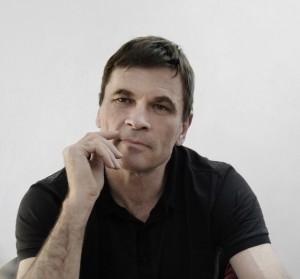 2) The A-N Coaching System is user friendly! The AN coaching system is based on robust and published research and also on real time experience of coaching global business and public-sector CEOs and leaders. It’s great strength is to crystallise complex ideas into a very user-friendly coaching system that can be adapted to suit each coach and each leader. It is not rigid or prescriptive and allows the coach to bring themselves to the work.
2) The A-N Coaching System is user friendly! The AN coaching system is based on robust and published research and also on real time experience of coaching global business and public-sector CEOs and leaders. It’s great strength is to crystallise complex ideas into a very user-friendly coaching system that can be adapted to suit each coach and each leader. It is not rigid or prescriptive and allows the coach to bring themselves to the work.
3) Joining an international learning network. The A-N 3 day coach training is the beginning not the end. It is accelerated learning and coaches take away a course training book plus two text books to continue their learning. After passing the course they then become Registered A-N Coaches, and join the international network of Advanced A-N Coaches to continue learning and sharing business leads and best practice. We are aiming to develop a dynamic network of coaches who are working together to change the leadership landscape.
4) Coaching leaders to act in ‘good faith’ to create the ‘good society’
5) The A-N coaching approach is an ethical approach, designed to help leaders work in an authentic way, and to connect their work to the wider goals of developing a better society.
6) Dr Simon Western is an internationally recognised leadership thinker and coach who specialises in developing distributed forms of leadership ‘Eco-Leadership’ and coaching CEOs and seniors leaders in how to adapt, lead and influence change in today’s network society.
Once trained, coaches join our international network of Advanced Registered A-N Coaches to share business possibilities, and develop ongoing learning together.
~ Professor Simon Western, Adjunct Professor University College Dublin
Advanced Coach Training http://www.analyticnetwork.
Facebook https://www.facebook.
Analytic-Network coaching is an avant-garde coaching company that offers coach training and leadership coaching at the most advanced level in the market. We work from a rigorous theoretical base drawing on the latest thinking on leadership and organisations, and the first ‘meta-theory of coaching1’
Monday, January 4th, 2016

Today Michael Neil over at Supercoach.com shared a great tip for how to Love The Year Ahead in his weekly newsletter. It really resonated with me as his tips do every week. I love reading his Monday morning message on my way into work and they always leave me with stimulating food for thought or find me scrambling for my pen.
Here’s the link to his first newsletter of 2016 which is so on point. You can read the article in full here
Below, I’ve shared the great tips he outlines for doing more of what you do best in order to have not just a best year but an enjoyable year. Read the article to find out what led him to this place when he was asked a provoking question by UK coach Robert Holden – click here
The message in the article centres around the four core questions below:
By the time he had finished along with his business manager he worked out:
The things he could streamline and eliminate in his business that he no longer needed to do from the “D” list.
Highlighted the things he loved doing in answer to the “A’s” and built in the structures in his business to ensure more of these things happened.
Started saying no to the “C’s”.
Made room for the more of the “B’s” that came along that appealed to him.
These are great coaching tips for getting focused on where you’re best placed to focus your energy and on what activities and areas of work for the year ahead that will ensure ultimate enjoyment.
It’s not a bad idea if you’re a coach to work through the questions yourself. Your work will have more currency when you share tools that you’ve tried out yourself.
Have fun.
Do sign up for his newsletter here
and also for the brilliant UK coach Robert Holden who you’ll find over here
Robert introduced Michael to the questions when they were working together.
They’re both great coaches and human beings and I think if you don’t know their work already you’ll enjoy.
Sunday, January 3rd, 2016

I’ve been writing a journal for over thirty years. The content of my journal is varied. Anything from how I am feeling, notes and draft content for work projects and articles to quotes and notes of interest gathered spontaneously throughout my day. I see my journal as a working book, sometimes a work in progress. It is a living book I am always returning to look things up, retrieve a quote or expanding on ideas started on her pages.
My journal travels with me everywhere. You will often find it squashed into my handbag, sometimes claiming most of the space. But knowing I have it in my possession is oddly a comforting feeling, one that ironically always conjures up a feeling of safety and connection.
My journal entries are precious to me. More precious than most of the other contents in my handbag. A message brought home recently when I bounced off a train from Derby and in between walking from the mainline train station to the underground managed to leave my handbag and all its content in the middle of Kings Cross train station. Now that’s a story for another day but suffice to say in the hour or so before I was re-connected with the entire contents of my handbag (I know, you’re thinking how lucky is that!) what I worried most about more than anything else in my bag which included my purse, all my cards and both sets of keys for the car and home was my journal. I would have paid a handsome reward just to get my journal back.
To be honest without it I felt shipwrecked. My journal hosts many precious ideas, quotes and notes that may appear insignificant on their own but when pieced together with other projects and content are not. It is through the practice of regular journaling that I enable myself to become more self-aware, more mindful, often thoughtful and reflective and I hope as a result often a better person and human being.
Don’t get me wrong. Keeping a journal doesn’t suddenly make you into a saint. I am far from perfect and my journal knows this but it is amazing how non-judgemental and forgiving my journal is 24/7, something I deeply respect and hold dear to our relationship. I have noticed that with my journal by my side I am more willing to own up to mistakes and wrong doings and thereby be better placed to made healthier choices and decisions about what to do about them.
Journaling offers perspectives on life that are real. Very often coming to my journal brings distance to emotionally charged feelings. It helps me in uncanny ways to see other sides of the coin when I slow down and examine situations and events with a more discerning eye. Journaling allows me to become more thoughtful and mindful when I write. Keeping and sustaining a journal has helped me to open doors in my imagination to my dreams and aspirations which may have remained closed had I not chosen to commit to a practice of regular journaling and reflecting on the page.
I love the creativity that explodes when I write and engage with my journal. It gives me a different experience to the sometimes, demanding pressures of work and modern life that seem to suck out life force through the demands of day to day activities.
I love the things I tuck into my journals, the random yellow index cards with a quote captured from something I was reading or a train ticket that reminds me of a poignant moment on a journey which could easily have been forgotten. Many times I am surprised by what I find when I return there.
I am not sure how far I would have made it in my life if I had not written regularly in my journal. It has been a healthy dose of self-therapy and on many occasions self-coaching against a backdrop of low self-esteem, self-doubt and low levels of depression. Journaling was a self prescribed writing prescription that brings with the practice a range of physical, psychological and emotional benefits. Then there are the times when the journal is like one of those friends that doesn’t know how to do anything else than tell you the truth no matter how hard they try to hold back.
I believe I am a better person because of my journal. It allows me to be more of myself, more often and that has to be a good thing. By this I mean when I take refuge in my journal I am more akin to express myself wholly and sincerely and not dumb down who I am which we can sometimes do when we are with other people. It has saved me countless arguments because the journal seized the intensity and sometimes ridiculousness of my feelings and processed them before I projected my unprocessed feelings onto my nearest and dearest, colleagues or total strangers. It has also been the balm when I have felt overwhelmed and distressed and not sure about what to do the next. My journal has always helped me to find a way through.
That’s why it works for me to write my journal first thing in the day. I write around 6am and flex my journal muscles by writing in-between the gaps of my day on public transport, at the wheel of my stationary car or in waiting rooms. Wherever I find myself doing it sets me up for the days. Journaling nourishes and strengthens the roots of who I am. Journaling creates healthy conditions that allows me to step forward to go face the world with greater confidence and stability that has originated from within.
Writing a journal has led to a rich inner life that has served as a safe harbour I can return when the storms of life rage. Keeping a journal makes you an author of your own life. When you let go and trust you will often find that the writing has information for us rather than the other way round.
There are things in my journal that are intensely private and will stay private and there are private things in my dairy that are common to all human beings that warm our hearts when they are shared. Keeping a journal is not a lonely act. On the contrary it connects us to the tribe called the human race by giving us a voice, a safe place to tell your stories, shed your tears and build your dreams. This is what connects one human soul to another. Journaling connects you to a global community of other journal writers all around the world.
I wonder what will motivate or inspire you to keep a journal in 2016? Can you think of the ways in which a journal will help you become a better person, be a better person or live a better life? Are there ways in which keeping a journal can support you to upgrade your work life, or help you become a better observer and listener?
Not sure where to start with your New-Year journal entries. Are you in need of more inspiration for your journal pages? Then treat yourself to my free downloadable Juicy Journal prompts, which I hope will inspire you to hit the pages of your journals in 2016 http://ow.ly/WuJxw
The kit includes fifty-five custom designed journal prompts with inspirational quotes. There’s no email sign up and you have permission to share them around.
Lets share the love in 2016.
In service of your wonderful writing self.
Happy New Year!
Love Jackee
Tuesday, December 1st, 2015
Over the years I’ve masked my preference of introversion and learnt to masquerade as an extrovert in my career and in social settings. People who know me well know I prefer staying in and curling up with a good book than being the life and soul of the party. But to see me in social and work settings it would be hard to see through this. The paradox is that even though I get a buzz being with people I also can easily get over stimulated.
Don’t get me wrong I can be the life and soul of the party and I know how to have a good time but none of this would be happening if it wasn’t for the world of introversion I submerge myself in on a regular basis.
For years I’ve been enjoying solo dinners and trips to the cinema on my own. I’m an expert on taking days off and hiking around London where I was born and live and hanging out in many of the wonderful green spaces that fill up the London landscape. But one of the things I love most about being an introvert is hanging out with some of my favorite trees dotted around the London area.
I’ve held this love of trees from childhood. This love of trees was re-awakened in the 1990’s when I read a book, Tree Wisdom by Jacqueline Memory Patterson. This book reminded me of how much the introvert in me has subconsciously sought out the company of trees at different times in my life.
One particularly synchronistic event in my late thirties left an impact on me. I sat having lunch with a friend one summer afternoon under the shade of a small tree. As we were getting ready to leave I noticed a plaque next to the tree we had sat under that informed the reader that the tree whose company we were in was an ‘Elder’ tree. For no logical reason I could connect with at the time I scribbled down notes about the tree on a piece of paper which then sat on my desk for months.
Around the same time I became really interested in reading and researching more about the legends and myths associated with many of the trees we live with. This grew into a bit of a passion. Months later on a visit to my local library I came across a book of surnames. When I leafed through the book to search for the meaning of my surname ‘Holder’ I discovered that the name ‘Holder’ was the name given to people who lived near or close by to Elder trees.
Walking into the presence of some trees can be like walking into the hush silence and reverence of a church or a cathedral. I love the openness and non-judgmental nature of trees, which is an essential quality for nurturing introversion.
One year during a difficult time I would spend time every day under the watchful eye of a huge evergreen oak. This tree became my daily refuge and sanctuary each morning after my run. In its company I felt I could be myself without pretence. I could talk and the tree would listen and in the silence I could hear the whispering of my own voice echoing back at me.
I loved visiting and spending time with Sanctuary as I eventually named this tree, especially in the early mornings before the park became busy with dog owners and commuters on their way to work. And even though I no longer live in the area close to Sanctuary I still make time to visualize and connect with my memories of my time with her or when I can as a special and often necessary treat I jump in the car and go and visit her.
Over the years I’ve adopted many trees across South London with whom I spend quiet time with. When I feel really spent I head to the wilds of the ancient and splendid tree specimens in Richmond Park. Being in the company of these old trees instantly calms me down and recharges my batteries. Whether I’m simply tracing my fingertips across the ridges of the trees bark or feeling the arch of my back resting against a solid trunk, I find myself connected back to source.
When I’m in need of inspiration I head to Kew Gardens. Kew more tame than Richmond has it’s own magic. Late this summer I wandered under the huge canopy of a sprawling Cedar tree and sat under her enormous branches for a good hour or more in a sort of trance like state daydreaming. I didn’t write, didn’t text or read, just sat quietly enjoying the peacefulness and absorbing the energy and vibration of the moment. I left a different woman.
When I can’t physically be in contact with trees I turn to images of trees on my desktop or I stick images of trees in my journals and notebooks. Then when I need an introversion hit I flip to a page or tree image on my desktop and carry out a form of visual meditation. My friends and family know just how much trees mean to me and feed my introversion by sending me photo’s, images and articles about trees they encounter on their travels.
I even have a spiritual tree on the Caribbean island of Barbados where my Mum now lives that nurtures my introversion. The story of my discovery of this tree is too long to tell here. But she’s a huge, robust, majestic, African Baobab tree. This ancient monument of a tree is reported to be over a thousand years old. Legend has it that this tree seeded from seeds carried across the Atlantic by African slaves.
During our yearly family vacations to Barbados the busy social nature of our holiday soon has the introvert in me gasping for a visit to the Baobab. When I find myself becoming weary of all the eating out, the beaches and meeting up with friends and in need of some time alone I set off on a solo visit to the Baobab.
I am in awe of this tree’s history. Of how much she has witnessed, the stories and secrets she holds. Her mystic rubs off on me and stimulates my own creative juices, imagination and wonder. I can spend hours just walking around her huge girth and taking selfies to my hearts content. I get lost in time when I am with my Baobab.
To me being an introvert helps me be an extrovert in the world particularly with certain aspects of my work as a coach and a trainer and as someone who is a public speaker. Committing to time alone is not only good for my spirit and soul but makes me a better and nicer person to be with. Time alone feeds my work on so many levels.
Introversion is the current that provides flow and form to my writing and creative expression. I appreciate the company of trees and the mirror they provide of just being themselves. Trees help me appreciate why it’s so important to protect the introverted side of my personality.
The metaphor of solitary trees is not lost to the world of introversion. I think the German novelist Herman Hesse says it best in his book, Wandering, where he writes about his love of trees, “And even more I revere them when they stand alone.” And the final words go to Winston Churchill who is credited with the following quote, “Solitary trees if they grow at all grow stronger.”
Wednesday, November 11th, 2015

Sixteen years ago today (11.11.1999) my first book Soul Purpose was published. Soul Purpose was my baby and it’s hard to believe that sixteen years have sped by and she’s now all grown up. I set out intending to write an empowerment book for woman and ended up writing a book for myself. Every writer knows that the book you write will eventually change form in the process of the writing. This is exactly what happened to me. The more I got into the writing the more personal the book became. In the end I ended up disclosing things about myself, and my life that I hadn’t planned on sharing.
This morning despite a packed day ahead of me I made the effort and got up an hour earlier so I could spend quality time to celebrate the sixteenth anniversary of Soul Purpose. I held Soul Purpose in my hand and was reminded of how wonderful the cover of blue butterflies was and how much I still like that cover today. My photo on the back took me back to the photo shoot on a blustery autumn day in a seaside town and the orange tie-dye coat I wore for the shoot.
Next I sat quietly with Soul Purpose on my lap in my office with my eyes closed and connected with what an achievement it was to write and publish Soul Purpose and how ahead of its time the book was. This was a stretch for me because often that little voice of the inner critic in my head can pipe up and taunt me to stop embarrassing myself about a book that in the inner critic’s eyes failed. Don’t I realize that the book went out of print?
But today I put that voice to one side and instead I appreciated and thanked the former publishing house, Piatkus Book now part of Little Brown publishers for taking a chance on me, an unknown, first time author from South London. Back then we didn’t have twitter or the level of social media that exists today. The idea of building an authors platform was in its infancy. The marketing machine behind the book was non-existent. So whilst I sold hundreds of books through my workshops and seminars the book didn’t get the same airplay in bookshops and online.
So sitting with all of this I decided to celebrate by opening the book to a random page as a way into the text. I opened Soul Purpose to this extract and read the following,
Power Circles
“When I run workshops and seminars on empowerment I often use an exercise called the ’power circle’. Each woman shares a time in her life where she acted powerfully. The examples bring home the truth of how amazing we are: stories of women saving other women’s lives, transforming their lives against great odds, standing up for themselves, taking huge risks, acting on their intuition, the list is endless. These are not necessarily company directors, these are Earth Angels, spiritual beings, ordinary women like you and me. So often, it is acting on the sixth sense of intuition, which lies at the heart of these women’s stories.”
When we empower our lives we grow like trees. Our power is the root of the tree. The leaves represent our courage, the abundance that awaits us, our limitless creativity, intuitiveness and resourcefulness. We are natural born leaders. When we are in touch with our power we move through the world with greater ease, confidence and sense of our own worth.
When we come together as powerful women our energy vibrates and touches other women around us. By holding hands in sacred circles we share our power collectively. When we strip away our masks we can be ourselves and move beyond our self- imposed limitation.
(Holder, J. 1999)
The irony of this extract was I’m recently back from the Emerging women conference in San Francisco where at the start of the conference we all sat in a similar kind of Power circles and connected with eight other women in our groups through story telling and sharing. Sixteen years later it is clear that the same rituals are still vital and important to our spiritual and emotional well-being.
Leafing through Soul Purpose this morning I was struck at how timeless the wisdom is that I connect with in the book. Wisdom that has stood the test of time and still stands true for me sixteen years later. The themes of the book include many aspects and elements of life that are still important and valuable to women’s lives today, perhaps even more so. Themes like authentic leadership, nurturing and investing in your creative life, honouring your relationship with your body, valuing your personal connections with nature and the moon, deepening into stillness, creating and nurturing sacred space in the hectic space of your life and the value of going back to your roots.
Soul Purpose is a book about slowing down. Of deepening our roots and connection with our inner lives. It’s about noticing and connecting with the smaller details and beauty of life. It’s a book about healing and forgiveness.
Despite going out of print Soul Purpose has stayed alive through readers who over the years have continued to send me email messages and out of the blue reminders of how important Soul Purpose has been to them on their own personal spiritual and creative journeys. Every other reader who gets in contact lets me know that Soul Purpose is a book they keep by their bed. My readers tell me this is a book they get intimate with. This has been a very humbling and touching experience to know that despite the book no longer being available for sale it’s words have continued to make a deep impact.
I am currently in the process of bringing Soul Purpose back into print. I’ve drafted a new introduction and foreword and we’ve had a new cover designed. I know that the content of the book as the tag line of the title (self-affirming meditations, rituals and creative exercises to revive your spirit) suggests is what is needed in the current climate of speed. Its restorative message is medicine for the modern soul.
As today is a new moon in Scorpio energetically it feels like the right time to deepen the roots, further prepare the soil and plant the seeds for the re-appearance of Soul Purpose on the bookshelves in 2016.
Wednesday, October 21st, 2015

I’ve recently returned from a stellar line up of women all speaking on the personal themes of women and leadership at this years Emerging Women Live Conference in San Francisco. The keynotes included notable luminaries and thought leaders of the moment Brené Brown, Elizabeth Gilbert, Jane Goodall and completed with an inspiring and heart filled closing speech by Dr Tererai Trent one of the most internationally recognized voices for quality education and women’s empowerment.

But the content of the conference was made even better through the line up of women who spoke under the category of Emerging Shorts. Speakers like the impressive Guru Jagat a senior teacher of Kundalini yoga, Promise Phelon CEO of TapInfluence and Sahar Paz author of ‘Find Your Voice.’
These pioneering women leaders working on the ground shared compelling stories of their lives and the ways in which they are empowering women’s lives. The line up of presenters all weekend was refreshingly culturally diverse. Saturday’s line up included an excellent panel discussion, Uncovering Blind Spots: How Unconscious Bias Limits Connection, Creativity and Profits. The panel line up included Rosalyn Taylor O’Neale a diversity and inclusion consultant and educator, Regina Lawless a VP, Talent management consultant and career coach and Pamela Mattson an international leadership development consultant.
Founder and CEO Chantal Pierrat, who was previously VP of Sales and Marketing at Sounds True, founded emerging Women in 2012. To meet Chantal is like walking up to a model on the runway except this woman oozes a current of confidence that flows from the inside out in an undeniable way. The fact that she’s a former dancer and the founder of Soul Sweat was not wasted when after her elegant and fun hosting for two days she led the entire conference in a soul sweat dance work out before the conference party got underway that left me crawling for my bed. Girlfriend can work it.

The message that sung out loud and clear from the conference is that women are taking leadership under their own wings and doing it for themselves. Many of the presenters on the programme are movers and shakers who are creating global and local movements for women and girls across the world. These are women who are no longer accepting ‘No’ when pitching for funding and instead have set about creating crowd funding and financial revenue streams for women start up’s in a big way. As one of the speakers Angels founder, Natalia Oberti-Noguera #leadinglookslike reminded us in her talk, “If you don’t have a seat at the table, bring your own chair.”
There was not one presenter for the entire conference who didn’t hold her own authentically on the stage. It was beauty and grace to watch them all flower as they spoke from the heart. This was Ted.com for women in business but with more spirit and soul. There was a free live stream that is now available on demand from Sounds True here http://live.soundstrue.com/emergingwomen15/
The presenter that really struck a deep chord with me was psychotherapist Esther Perel. Her work on the ‘erotic and ‘desire’ is literally breaking women open for the better. Half of the conference poured into her workshop on the Saturday afternoon.
I experienced a big shift in her workshop as another piece of the jigsaw in my healing process fitted together. As a former victim of early childhood sexual abuse the experience shut down my healthy relationship with the ‘erotic and desire.’ Of course it did. Listening to Esther’s talk made sense. Shutting down on the ‘erotic and desire’ also shut down many of my pathways to my own aliveness.
Many people who know me may not realise that I am incredibly shy and incredibly sensitive. But because I also was resilient to this earlier trauma I also need to remind myself of my own courage and braveness I accessed at the time.
Now having hit my fifties things are shifting big time. I’m at that point in my life when to be honest who cares what other people think, Esther’s workshop and talk put everything in perspective. By the time het talk was nearly over and I headed in the direction of the bookshop at the back of the auditorium all of her books had gone! Want to learn more then get hold of her book, Mating in Captivity, Reconciling the Erotic and the Domestic or watch one of her Ted talks herehttps://www.ted.com/speakers/esther_perel
Each presenter on the stage shared valuable content, a line, a story or a quote that struck home. Here are a few of the memorable one’s I captured in my notebook:
Former US physician Neha Sangwan encouraged us all to, “Take the 18 inch journey from your head to your heart.”
Elizabeth Gilbert described, “Perfectionism is fear in high heels and a mink coat acting funny.”
Elizabeth Gilbert again on celebrating the good stuff, “It’s okay to celebrate when wonderful things happen, because they don’t happen enough.”
On the subject of creativity Brené Brown said, “Unused Creativity is not benign.”
Silicon Valley thought leader Promise Phelon, “Grit can only exist in the absence of shame.”
Dr Jane Goodall, “When nature flourishes, we flourish,” and “My mother encouraged me to explore my dreams and in doing so allowed my dreams a chance to grow.”
Communication’s expert Wokie Nwabueze story of having to retrieve boxes from a dumpster after her husband thought he was helping out by clearing their garage when she was away one weekend was gripping. His thoughtful gesture resulted in removing several boxes containing many of her personal items from childhood including a hoard of her personal journals. The boxes had been dumped in the garage when they moved into the house and had remained untouched for several years. You could feel the electricity in the room as women sat on the edge of their chairs listening intently as she retold the story.
A thought leader on courage whose also a communication and conflict resolution expert this gem (one of many) from her talk stood out for me, “It’s easy to miss the moment we betray ourselves. We look good on the outside, we make choices inspired by others, and we put ourselves in boxes. People start to label our boxes … we forget that we are suffocating under the praise.”
Chantal Pierrat, Founder of Emerging Women shared a Sikh saying at the start of the conference,“Our truth is as strong as sixteen suns.”
You can learn more about Emerging Women and sign up to their content rich podcast conversations each month with women global thought leaders who are just like you and me:http://www.emergingwomen.com/about/
Saturday, August 1st, 2015

I’ve fond memories as a child of lost time spent doodling and colouring in colouring books. Colouring books were a regular feature in my family of origin. They’d find their way into bags and the back seats of cars on our way to church on Sundays and keep us children occupied as the hours of the church service clocked up and our energies waned. Colouring blunted the boredom of the ranting church minister and I loved the focus and concentration that colouring offered and the resulting colour explosion was always delightful.
At an early age a certain kind of confidence emerged from taking a black and white illustration and becoming the curator and creator of its new colour makeover. Years later when I was mother to a young child colouring books became a staple play activity. As soon as her tiny fingers could hold a crayon and pencil securely my daughter learnt to colour. Aida would spend countless hours on our living room floor colouring away to her hearts content. And it was this same child some twenty something years later who handed me an exquisite colouring book at Christmas last year called, The Secret Garden: An Inky Treasure Hunt by Johanna Basford
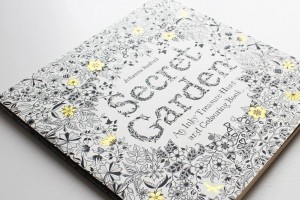
Turns out that Colouring books are back on the market aimed at adults in a big way. Remembering my own memories about colouring what I loved most was the simplicity surrounding the activity. It’s a relatively cost effective activity. It requires little instruction and no one telling you what colours to use whilst it gives the child or adult permission and freedom to pick and have their way with colours they personally want to work with.
There’s something grounding and calming about colouring inside the lines but also a certain wildness and liberation when we stray outside the lines. A positive colouring experience becomes an even more enjoyable activity once you have the right tools, which are minimum: a good, solid illustration to colour in and your pack of colouring pencils, crayons or felt tips.
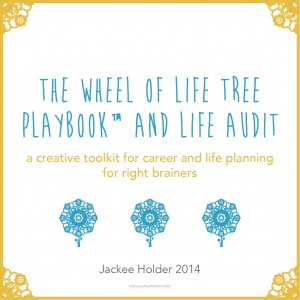
In 2011 I used this concept of colouring to design a coaching template designed to measure your overall satisfaction with your work and personal life. The Wheel of Life Tree Audit uses colouring to rate your levels of satisfaction across core life and work areas and then set goals to extend and improve satisfaction in key areas. I designed an activity that would engage both the right and left brains, one that would provide a colour snapshot of your life through the lens of colour. You can download the Wheel Of Life template here or the Wheel of Life Tree Playbook & Life Audit here or find a copy in my book Be Your Own Best Life Coach
Research is now bringing to light the many benefits of colouring already known in the alternative medicine world of colour therapy. Colouring reduces stress, the activity conjures up an almost Zen like mindfulness and working with certain colours can be soothing and calming.
Colouring is kinesthetic, a creative activity that moves the body and ignites the intricate and exploratory nature of the creative mind. I like the slow, gradual build up colouring brings to the page or an illustration. I enjoy the repetitive rhythm and the gradual, slow release of energy
Personally I’m drawn to the primal nature of colouring. Before most children experiment and learn to draw, they colour. Colouring predates drawing and writing. I use colouring now as a form of stress release but also as a working meditation. In a recent blog post creativity coach Jamie Ridler wrote about the additional benefits she derives from colouring and being creative, “Don’t be surprised if a sudden moment of clarity arrives while you’re colouring, doodling or beading.”
Being a writer I sit using words all day so an activity like colouring gets me to use my hands in a different kind of way. It breaks up routine patterns and ways of thinking. It gives my mind and thoughts breathing space to go in new and different directions. It’s possible to generate hits of dopamine when colouring in the same way we get that initial surge when we land on Facebook or other forms of social media or reach for that bar of chocolate.
Have fun with colouring. Notice that colours generated onto the page can extend into colours you wear, colours you notice other people wear and becoming more aware and present to the colours alive and visible in your environment and in nature.

Crayons are my favourite colouring instruments and have a smooth, effortless like movement across the page. Pencils are great but require greater pressure and attending to so make sure you have a sharpener to hand. Also be aware that pencil colour can sometimes be faint and watery like and not as bold and robust as the colour tones of crayons.
There are many different ways to have fun with colouring. From colouring books, to collages to taking photo’s of scenes with similar colours and tones. Having a range of great colours to hand helps when colouring. Using one colour can be extremely gratifying and helps to order the mind. And it’s worth remembering that colouring just for the sake of it can be a worthwhile reward and satisfying way of passing time.
Friday, July 31st, 2015

I’ve fond memories as a child of lost time spent doodling and colouring in colouring books. Colouring book were a regular feature in my family of origin. They would find their way into bags and the back seats of cars on our way to church on Sundays and keep us children occupied as the hours of the church service clocked up and our energies waned. Colouring blunted the boredom of the ranting church minister and I loved the focus and concentration that colouring offered and the resulting colour explosion was always delightful.
At an early age a certain kind of confidence emerged from taking a black and white illustration and becoming the curator and creator of its new colour makeover. Years later when I was mother to a young child colouring books became a staple play activity. As soon as her tiny fingers could hold a crayon and pencil securely my daughter learnt to colour. Aida would spend countless hours on our living room floor colouring away to her hearts content. And it was this same child some twenty something years later who handed me an exquisite colouring book at Christmas last year called, The Secret Garden: An Inky Treasure Hunt by Johanna Basford
Turns out that Colouring books are back on the market aimed at adults in a big way.

Remembering my own memories about colouring what I loved most was the simplicity surrounding the activity. It’s a relatively cost effective activity. It requires little instruction and no one telling you what colours to use whilst it gives the child or adult permission and freedom to pick and have their way with colours they personally want to work with.
There’s something grounding and calming about colouring inside the lines but also a certain wildness and liberation when we stray outside the lines. A positive colouring experience becomes an even more enjoyable activity once you have the right tools, which are minimum: a good, solid illustration to colour in and your pack of colouring pencils, crayons or felt tips.
In 2011 I used this concept of colouring to design a coaching template designed to measure your overall satisfaction with your work and personal life. The Wheel of Life Tree Audit uses colouring to rate your levels of satisfaction across core life and work areas and then set goals to extend and improve satisfaction in key areas. I designed an activity that would engage both the right and left brains, one that would provide a colour snapshot of your life through the lens of colour. You can download the Wheel Of Life template here or the Wheel of Life Tree Playbook & Life Audit here or find a copy in my book Be Your Own Best Life Coach here
Research is now bringing to light the many benefits of colouring already known in the alternative medicine world of colour therapy. Colouring reduces stress, the activity conjures up an almost Zen like mindfulness and working with certain colours can be soothing and calming.
Colouring is kinesthetic, a creative activity that moves the body and ignites the intricate and exploratory nature of the creative mind. I like the slow, gradual build up colouring brings to the page or an illustration. I enjoy the repetitive rhythm and the gradual, slow release of energy
Personally I’m drawn to the primal nature of colouring. Before most children experiment and learn to draw, they colour. Colouring predates drawing and writing. I use colouring now as a form of stress release but also as a working meditation. In a recent blog post creativity coach Jamie Ridler wrote about the additional benefits she derives from colouring and being creative, “Don’t be surprised if a sudden moment of clarity arrives while you’re colouring, doodling or beading.”
Being a writer I sit using words all day so an activity like colouring gets me to use my hands in a different kind of way. It breaks up routine patterns and ways of thinking. It gives my mind and thoughts breathing space to go in new and different directions. It’s possible to generate hits of dopamine when colouring in the same way we get that initial surge when we land on Facebook or other forms of social media or reach for that bar of chocolate.
Have fun with colouring. Notice that colours generated onto the page can extend into colours you wear, colours you notice other people wear and becoming more aware and present to the colours alive and visible in your environment and in nature.
Crayons are my favourite colouring instruments and have a smooth, effortless like movement across the page. Pencils are great but require greater pressure and attending to so make sure you have a sharpener to hand. Also be aware that pencil colour can sometimes be faint and watery like and not as bold and robust as the colour tones of crayons.
There are many different ways to have fun with colouring. From colouring books, to collages to taking photo’s of scenes with similar colours and tones. Having a range of great colours to hand helps when colouring. Using one colour can be extremely gratifying and helps to order the mind. And it’s worth remembering that colouring just for the sake of it can be a worthwhile reward and satisfying way of passing time.